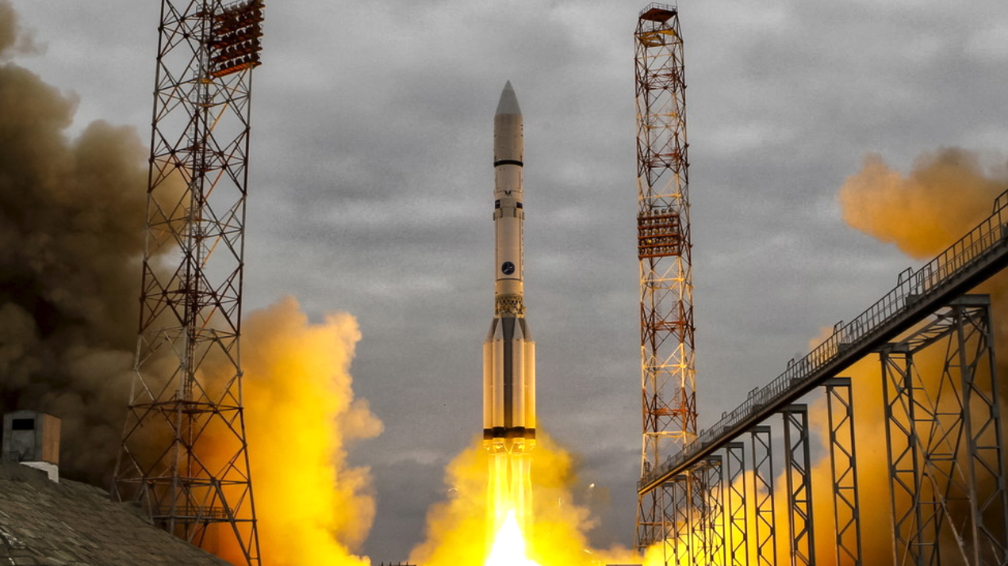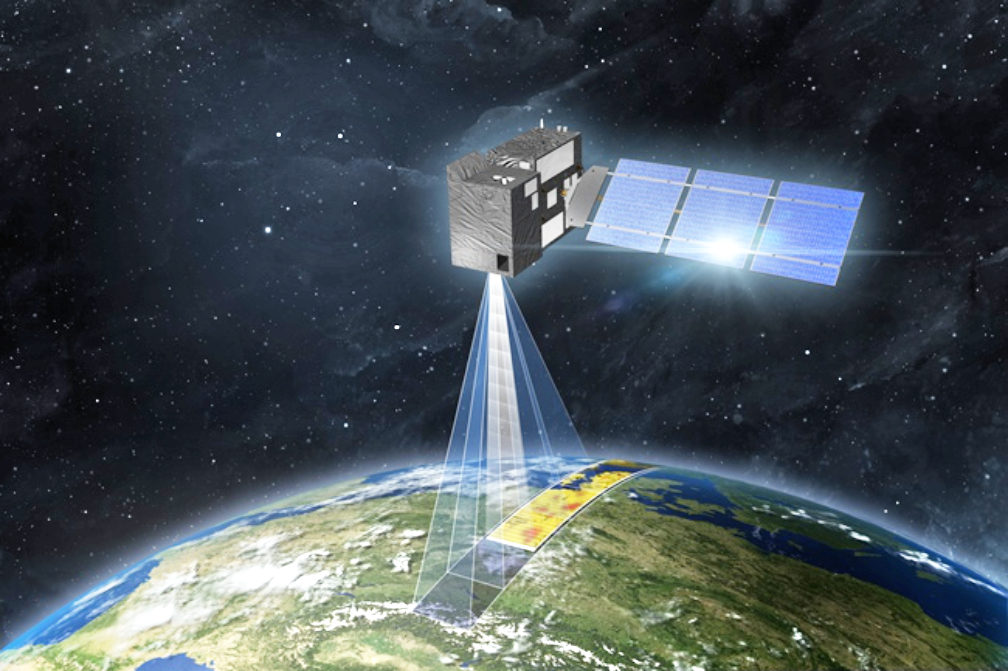
The Express-80 and Express-103 communications satellites have been successfully launched by a Proton launch vehicle from the Cosmodrome of Baikonour in Kazakhstan.
The satellites are the result of the partnership between the Russian company ISS Reshetnev, providing the H1000 platforms, and Thales Alenia Space, a Thales (67%) and Leonardo (33%) joint-venture, providing the payloads.
The mission of both Express-80 and Express-103 satellites, which will last 15 years, is to provide fixed and mobile communications, digital television and radio broadcasting, high-speed Internet access and data transmission services in the Russian territory, the operator is RSCC (Russian Satellite Communication company).
Express 80 will operate at 80°E, the payload consists of 18 C-band ,active transponders and 20 Ku-band, active transponders, covering the Russian territories, plus 2 L-band, active transponder,s will provide global coverage. The Payload power is 6.3 kW.
Express 103 will operate at 103° E (or 96.5° E) and the power is also 6.3 kW. The payload consists of 18 C-band, active transponders and 20 Ku-band, active transponders to cover Russian and South-Eastern Asiatic territories, plus an additional 1 L-band, active transponder to provide global coverage.
Thales Alenia Space has been teaming up with Russia for more than 20 years, starting with the SEASAT program. Over this period, Thales Alenia Space provided payloads for the satellites Express-A1, Express-A2, Express-A3, Express-A4, Express-AM11, Express AM22, Express AM2, Express-AM3, Express-AM33, Express-AM44, Express AM8, AT1 and AT2, Kazsat 3, Express 80 and 103 and AMU7, the platform being provided by ISS Reshetnev.
In addition Thales Alenia Space provided the payloads for Express-MD1, Express-MD2, Kazsat 1 and Kazsat 2 satellites, the platform being developed by the Russian company Khrunichev.
The partnership with ISS-Reshetnev started in 2000 when Thales Alenia Space and ISS implemented a joint marketing strategy based on the ISS Express-1000 satellite platform. By combining their complementary products and technologies, ISS Reshetnev and Thales Alenia Space formed a partnership leading to major international successes, such as Telkom 3, Kazsat 3 and Yamal 401 satellites.
Additionally, Thales Alenia Space has signed a €72 million first tranche contract with OHB System, prime contractor of the project, to develop the payload for the two satellites of the CO2M mission, as part of Europe’s Copernicus program.

Copernicus is the core satellite Earth Observation (EO) program of the European Commission and a cornerstone of the European Space Agency (ESA) activities in the field as well. It provides Earth observation data for environmental protection, climate monitoring, natural disaster assessment and other social tasks.
The goal of the CO2M mission is to measure atmospheric carbon dioxide produced by human activity. These measurements will reduce current uncertainties in estimates of emissions of carbon dioxide from the combustion of fossil fuel at national and regional scales. This will provide the EU with a unique and independent source of information to assess the effectiveness of policy measures, and to track their impact towards decarbonizing Europe and meeting national emission reduction targets.

Thales Alenia Space will deliver to OHB the CO2M payload based on a modular architecture and design to be built around:
- A combined CO2/NO2 (carbon dioxide/nitrogen dioxide) instrument based on a near-infrared and shortwave-infrared spectrometer provided by Thales Alenia Space in France
- A Multi-Angle polarimeter (MAP) based on 4 identical cameras, contained in a dedicated optical unit, provided by Thales Alenia Space in UK
- A cloud imager (CLIM), derived from the flight proven ProbaV instrument, provided by OIP sensors in Belgium
The CO2M payload will simultaneously deliver with required rigorous scientific accuracy: highly accurate quantitative measurement of CO2 and NO2 concentrations (using CO2 / NO2 instrument) , measurements of aerosols density (using MAP instrument) and cloud detection and mapping (using CLIM detection), thereby ensuring the maximum accuracy and error corrections of the measurements in CO2 concentration.
CO2M will measure images of total column CO2 with the resolution, accuracy, time sampling and spatial coverage required to provide the key space component input of the Operational Anthropogenic CO2 Emissions Monitoring & Verification Support (MVS) Capacity. The atmospheric measurements made by the combination of satellites and in-situ networks will provide Europe with unique operational capacity that will contribute to the global monitoring of fossil CO2 emissions, CO2M being a crucial element part of it. Fossil CO2 emissions[1], meaning CO2 emissions arising from anthropogenic activities are constituting an addition of exogenous carbon in the climate system with a huge impact on the climate change.
The involvement of Thales Alenia Space in the CO2M mission is in line with the strategy of Thales and Leonardo. Indeed, Thales has developed an ambitious strategy for a low carbon future through its own voluntary initiatives but also thanks to the high technologies developed for its clients. It includes a better understanding of climate phenomena, particularly with the development of dedicated space systems. Leonardo is also strongly committed to developing new-frontier space technologies for monitoring and protecting the environment. Sustainability is at the core of the Company’s new strategic plan “Be Tomorrow 2030”. Both Thales and Leonardo companies support the ten principles of the UN Global Compact.
Thales Alenia Space in Spain will provide the S-band transponder (SBT) and the Instrument Control Unit (ICU), Thales SESO the collimator and the mirror imagers VIS&NIR SPA, Thales Alenia Space in Switzerland the Telescope and the 2D slit.
Hervé Derrey, the CEO of Thales Alenia Space, said, “The CO2M mission is unique and marks an important milestone for Europe in terms of leadership with regard to climate change and the reduction of greenhouse gases. Thales Alenia Space is enthusiastic to bring all its flight proven expertise on Earth Observation to serve the ambitious goal to measure atmospheric carbon dioxide produced by human activity. This is in line with our Space For Life aspiration for a more sustainable life on Earth.”
